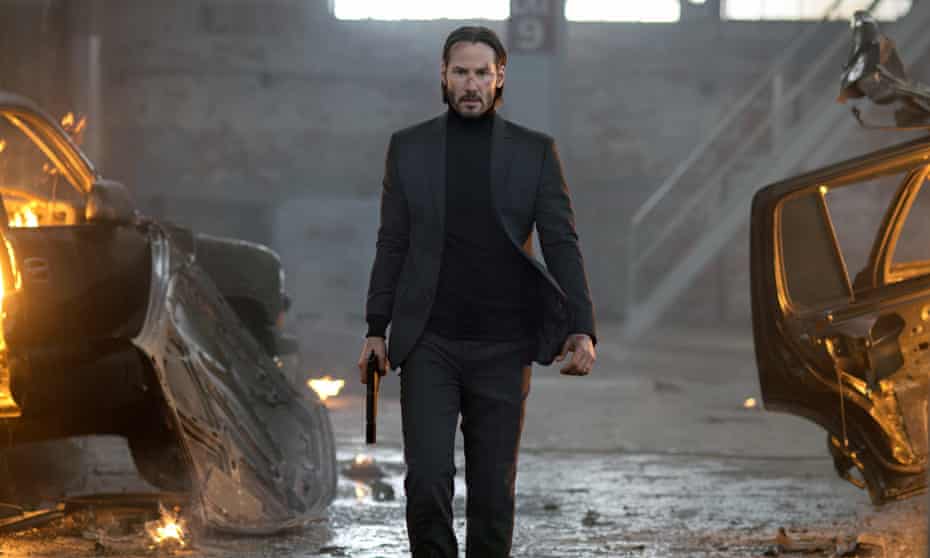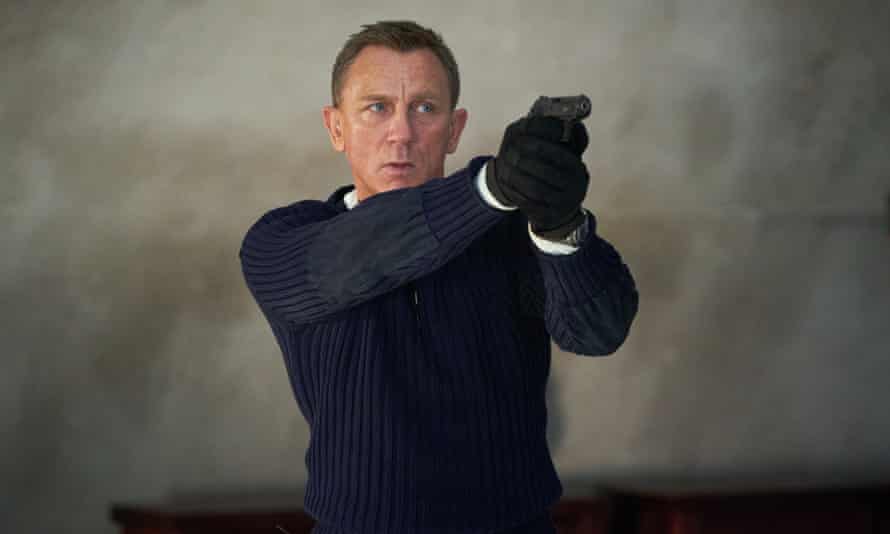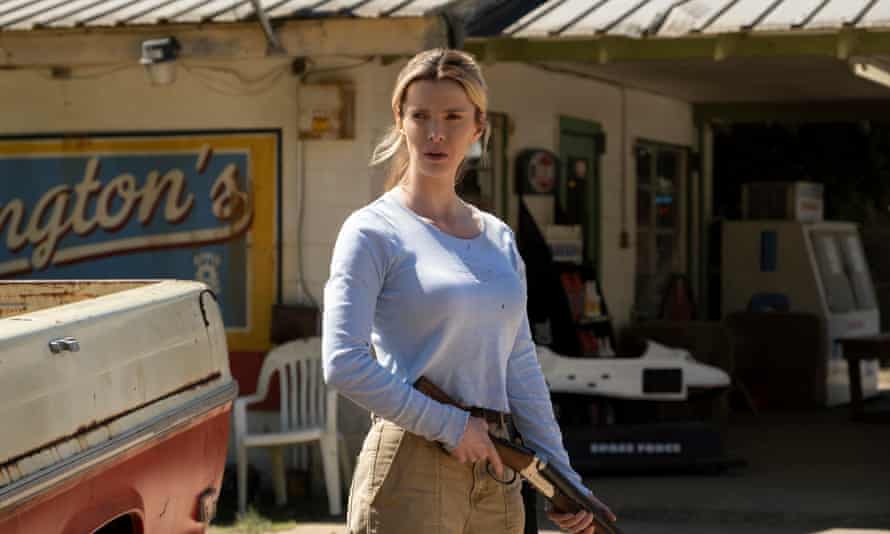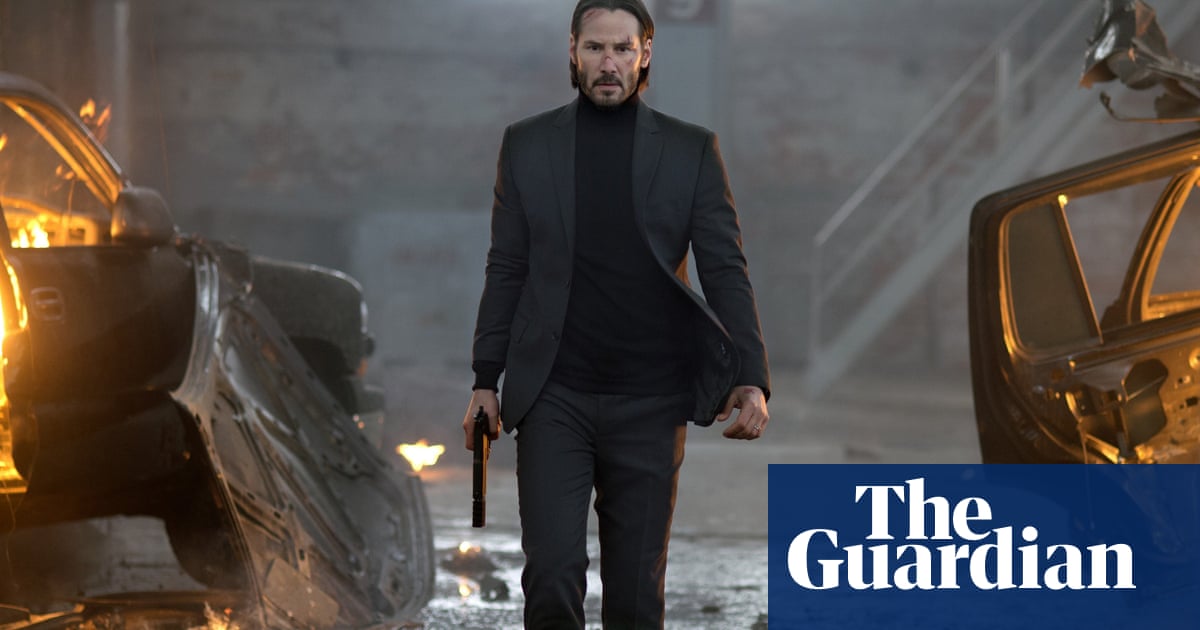Rust shooting sparks fresh debate over gun violence on screen
Firearms remain commonplace in major blockbusters but industry figures say Hollywood is led by audience demand

As police investigations continue into the death of cinematographer Halyna Hutchins as a result of a shooting during production of the Alec Baldwin film Rust, calls to ban real firearms on film and TV sets have intensified, with legislators in California and New Mexico threatening to take action if the entertainment industry does not.
The continuing presence of guns on sets has also reopened the wider debate over the prevalence of gun violence on our screens, and its potentially harmful effects. For Steven Gaydos, executive VP of content for Variety, the nature of screen violence is dictated less by American gun culture than the realities of the international film market. “Gunplay in movies is arguably bigger now than it’s ever been,” he says. “If you try finance a movie you will quickly discover that if you aren’t killing somebody – via horror, or guns, or superheroes – you are in an area where nobody wants to go.”
“It’s little to do with Hollywood’s own preferences,” he adds. “It has to do with what the computers tell the financiers how they can recoup their money – and that’s movies where people kill each other.”

If major franchises are anything to go by, then the James Bond films certainly seem to suggest a greater readiness for in violence in blockbuster cinema. Informal research shows that prior to the release of No Time to Die, Daniel Craig’s 007 – who debuted in 2006’s Casino Royale – is responsible for nearly twice as many on-screen deaths (235) as the next highest (Roger Moore, who starred in two more films, with 121). The number of deaths per movie puts Craig’s 007 at the top with 59, followed by Pierce Brosnan with 26, Moore with 17 and Sean Connery with 11, suggesting that Bond movies since 2000 have been considerably more violent than their predecessors.
Data on the effects of screen violence is not easy to come by. A much-cited study from 2013 concluded that violence in US films had more than doubled since 1950, and gun violence in films rated PG-13 (equivalent to a 12A in the UK) had more than tripled since 1985. In 2017, another study conducted an experiment that indicated that children who watched a film containing guns were more likely to play aggressively with and try and shoot real-seeming guns than those who had watched a film without any guns. As long ago as 1993, the American Psychological Association reported in its Commission on Violence and Youth that “there is absolutely no doubt that higher levels of viewing violence … are correlated with increased acceptance of aggressive attitudes and increased aggressive behaviour”. The same has been reported of video games. A 2001 study concluded that “exposure to violent video games increases physiological arousal and aggression-related thoughts and feelings”. Conversely, a study in 2019 failed to find a correlation between the rise in violence in PG-13 films and real-world violence over the same time period.
On the face of it, the US’s long-running internal conflict over its gun violence crisis, and its reluctance to consider limiting gun ownership, appears to determine individual responses to the issue. In 2012, National Rifle Association president Wayne LaPierre responded to the Sandy Hook massacre by blaming “vicious, violent video games” and “blood-soaked slasher films”, even as the NRA’s own National Firearms Museum showcases a Hollywood guns section. Conversely, apparently liberal producers in Hollywood have made product placement deals with weapons manufacturers for years, and convicted felons such as Mark Wahlberg and Danny Trejo have regularly portrayed gun-carrying characters on screen, but would not be allowed to hold a gun license in real life. In 2019, the violent satire The Hunt had its release postponed after a series of shootings, as well as an attack on the film by Donald Trump (“They create their own violence, and then try to blame others,” he said of Hollywood). It was subsequently released in March 2020.

By and large, Hollywood figures have been reluctant to criticise screen violence. In 2013 Arnold Schwarzenegger said that it should be “kept separate” from real-world shootings, saying: “We have to analyse how we deal with mental illness, how we deal with gun laws, how we deal with parenting.” Quentin Tarantino, whose films are often at the centre of the screen violence debate, took a similar line in 2013: “Obviously, the issue is gun control and mental health.”
Any attempts to take concrete action appears to be at a standstill. In 2013, film industry chiefs met with then vice president Joe Biden as part of the Obama White House’s failed attempt to enact gun control legislation, but refused to consider government restrictions on content, citing the first amendment. In 2014, disgraced producer Harvey Weinstein said he would no longer produce “crazy action movies” and announced an anti-NRA project The Senator’s Wife, but the film was never made. One pro-gun control film that did make it to cinemas, Miss Sloane starring Jessica Chastain, fared poorly at the box office.
Gaydos suggests that films are being produced in response to the audience’s “insatiable appetite” for violence, ranging from films such as the John Wick series to TV shows such as Squid Game to video games. “In the same way Facebook figured out a way to manufacture products to create a need, the need to see violence and gunplay on screen has an addictive nature to it at this point.”
“The new movie of today is designed by an algorithm, and the algorithm is dictating violence. And that’s what people are watching.”

